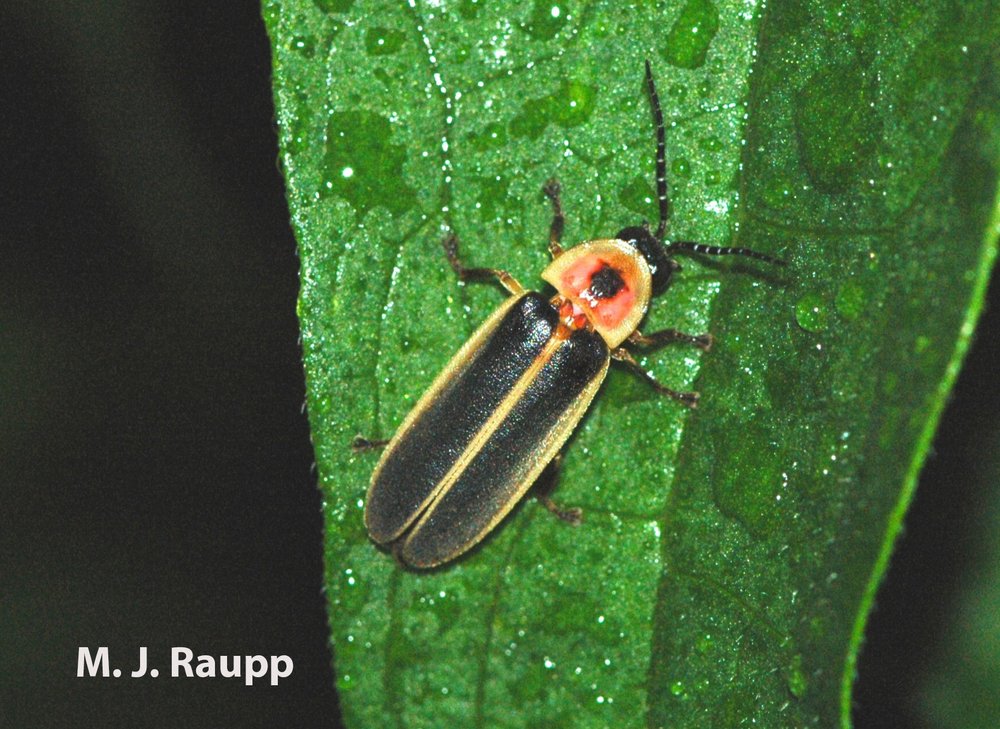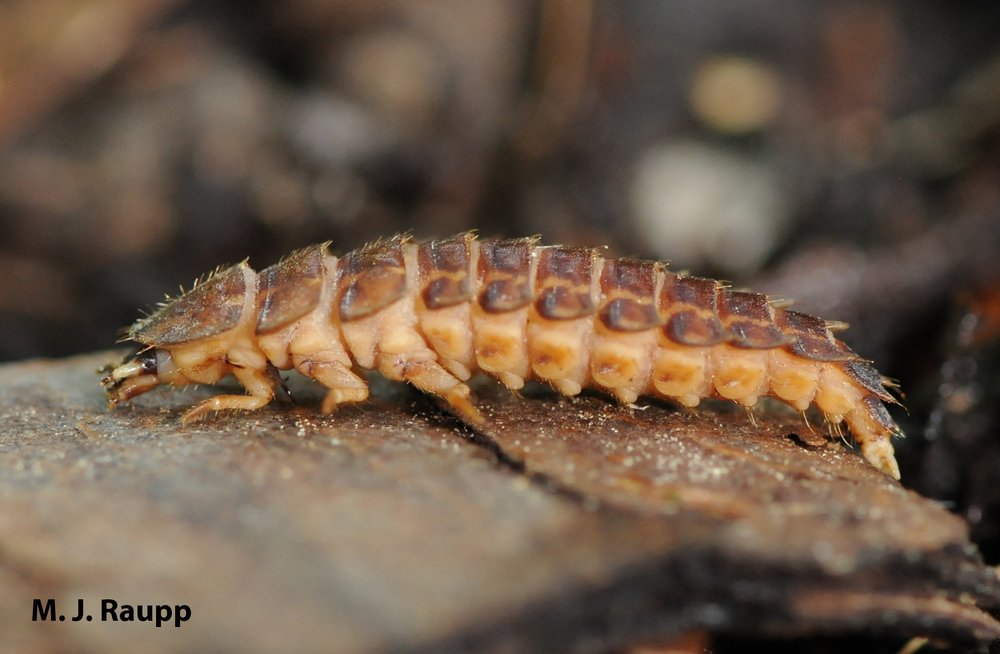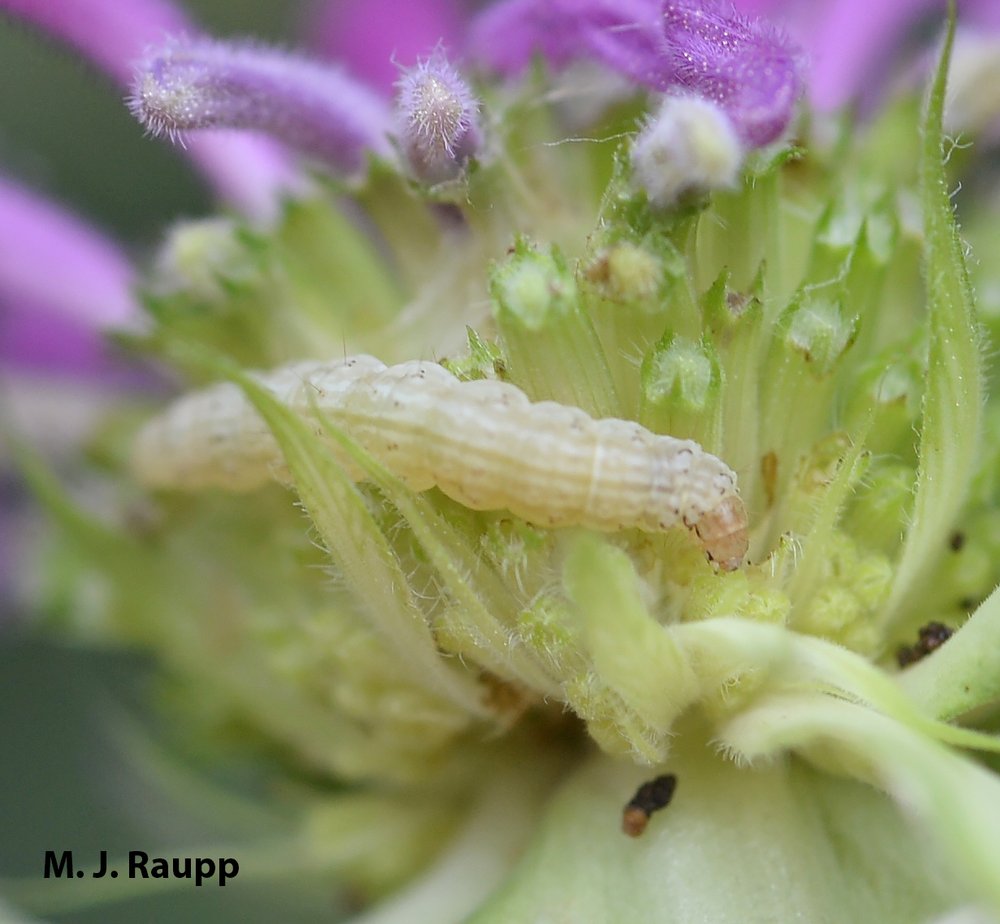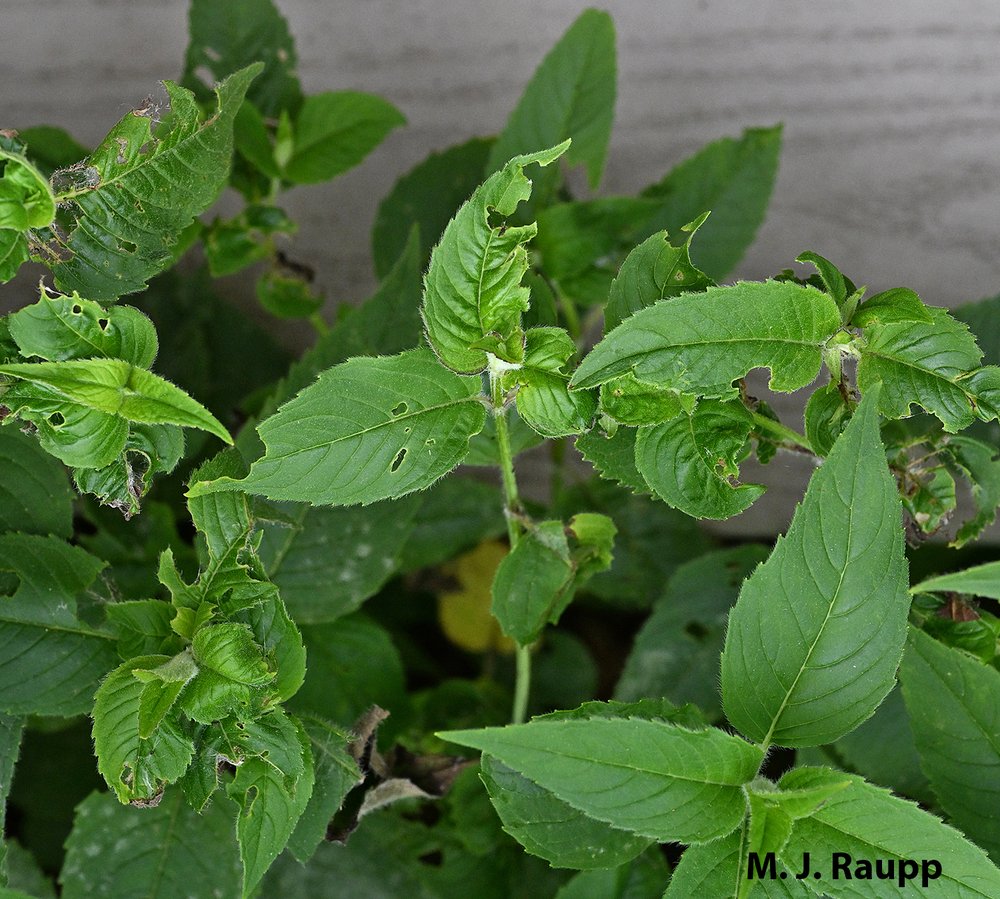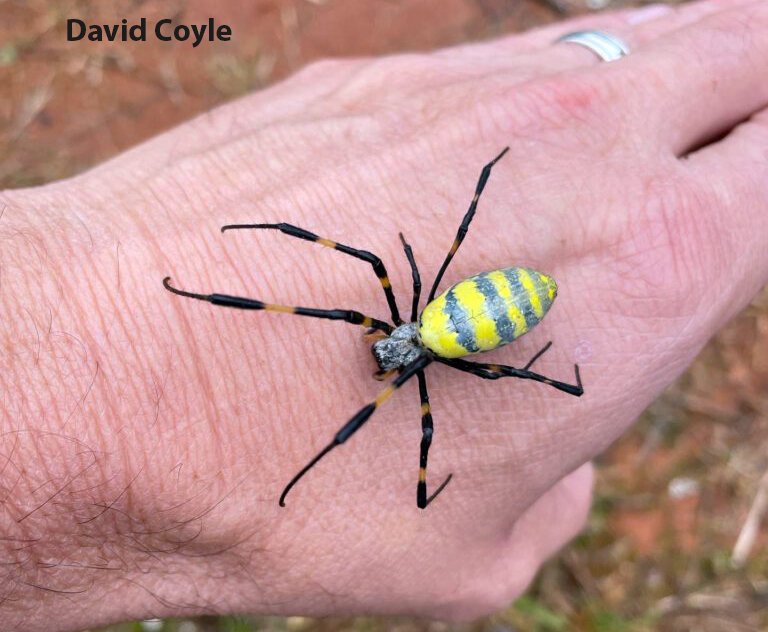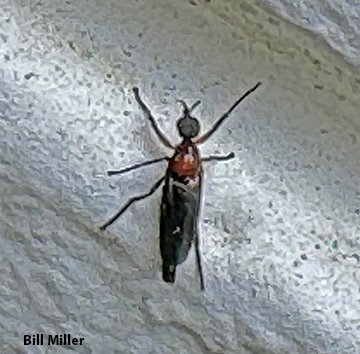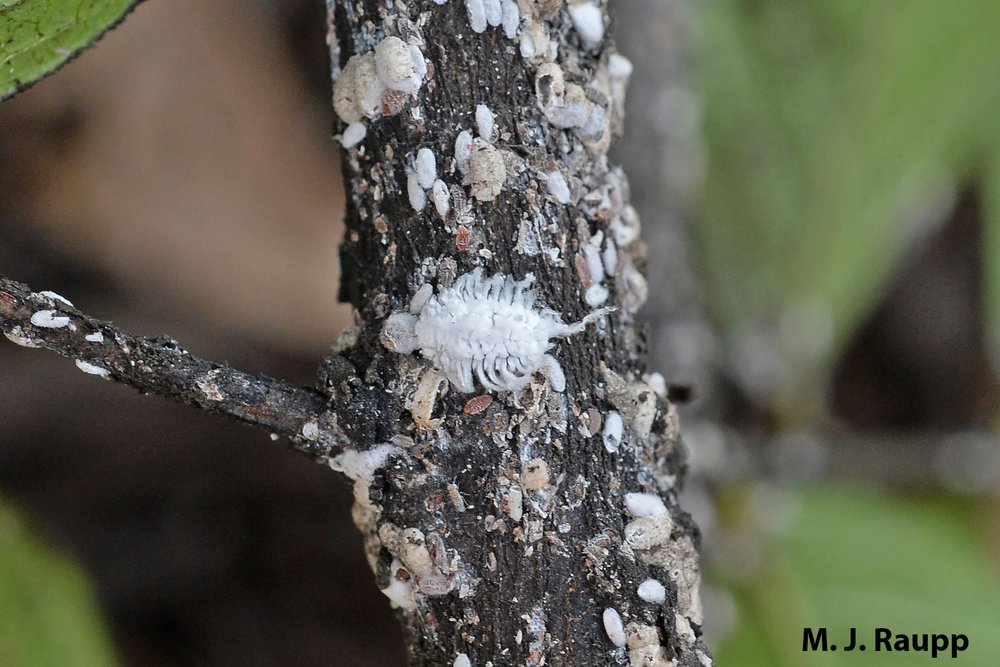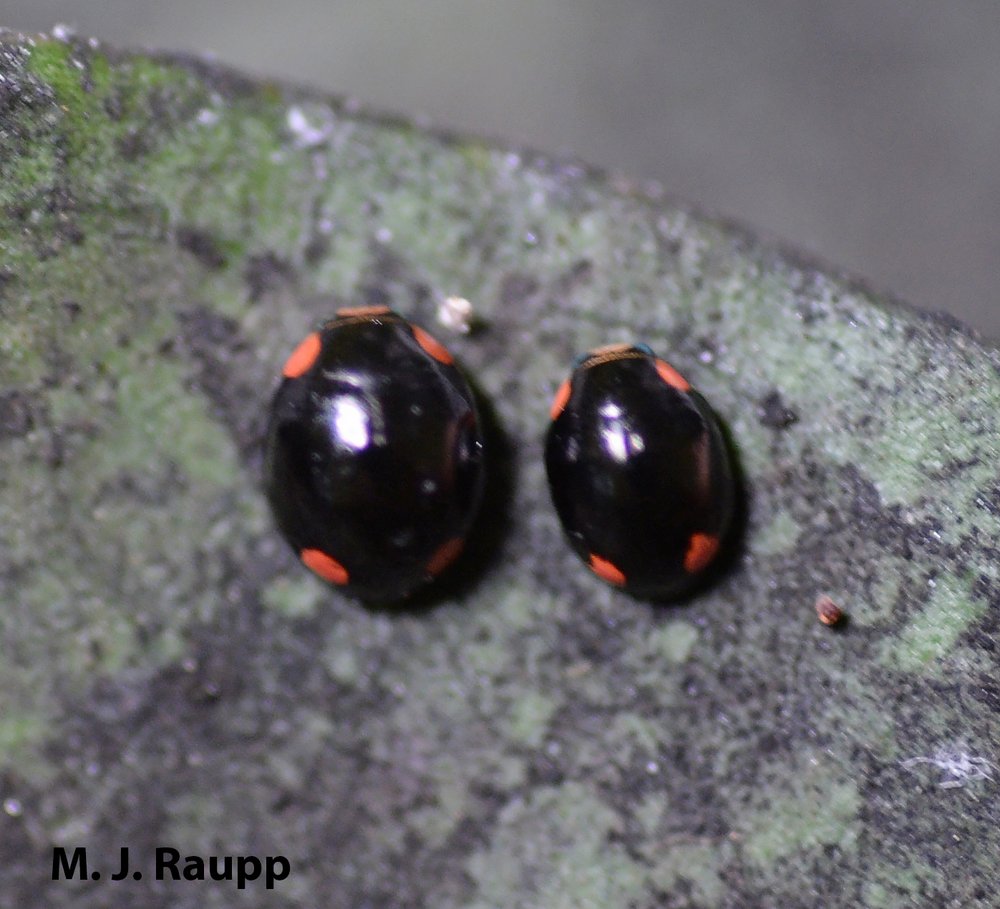Watch out monarda munchers, a wicked wasp is coming to get you: Four-toothed mason wasp, Monobia quadridens
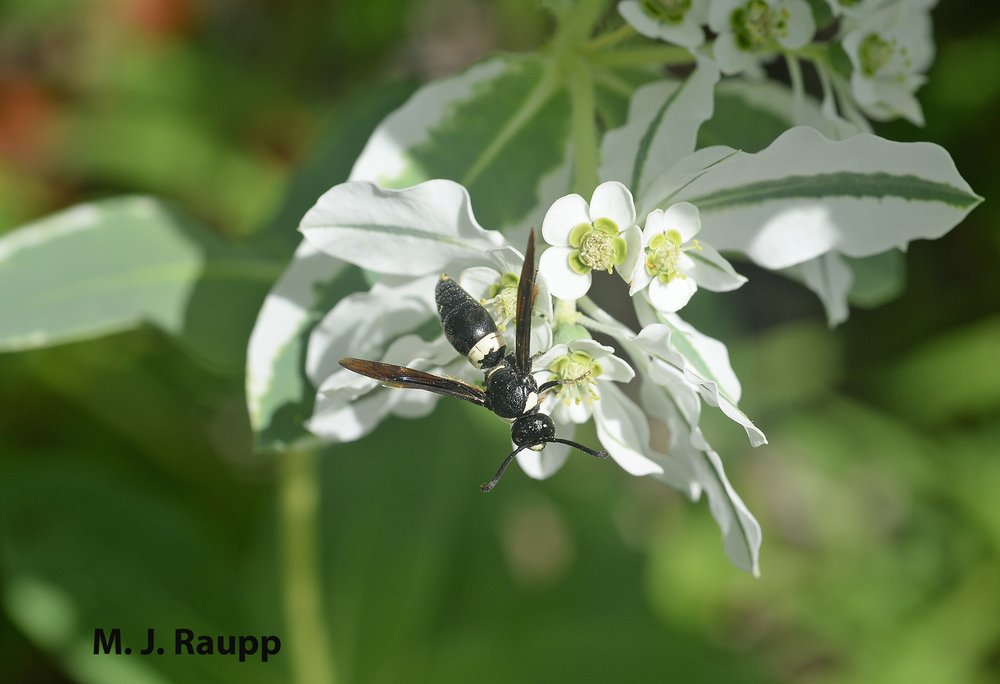
When not hunting caterpillars, four-toothed mason wasps can be found pollinating a variety of plants like snow-on-the-mountain.

Left unchecked, caterpillars of the raspberry pyrausta wreak havoc on blossoms of bee balm.
Two weeks ago we met the sneaky raspberry pyrausta, a pretty moth whose very hungry caterpillars love to pillage bee balm and other members of the monarda clan. To preserve the nectar rich blossoms of monardas for pollinators, we discussed ways to mitigate injury caused by ravaging caterpillars like removing them by hand or using interventions with OMRI listed insecticides. Well, in my garden last week, good old Mother Nature interceded with another solution to these blossom busters in the form of biological control provided by a nifty wasp known as four-toothed mason wasp.
Recently we saw leaves and buds of bee balm ravaged by caterpillars of the raspberry pyrausta. But this week, Mother Nature sent a member of her caterpillar hit-squad. Watch as the four-toothed mason wasp searches the foliage for a caterpillar. Score! The tiny caterpillar will be stung, paralyzed, and sealed in a brood cell to provide fresh meat for the wasp’s developing youngster.
We met this caterpillar-hunter as a busy pollinator last winter and learned about its dual ecosystem services of pollination and biological control. As adults, mason wasps are often seen visiting flowers, where they provide the important ecosystem service of pollination as they seek nectar to power their hunt for prey and pollen as a protein source to be transformed into eggs.
Mountain mint looks like a super food for mason wasps as they carbo-load in preparation to search for caterpillars. Watch as a female sips nectar from several blossoms before the hunt. Natural holes made in wood by other insects and human-made holes drilled in logs for mason bees make great nurseries for mason wasps. A little tickle with a wisp of wood brings a female out of her nursery. A quick look around reveals nothing amiss and back she goes into the gallery to resume her work. To my surprise, a weep-hole made in the vinyl frame of my living room window makes a great nursery for a mason wasp. After provisioning galleries with paralyzed caterpillars to feed their young, mothers gather balls of mud which will be used to seal the nursery chambers. Using jaws and patience, a female makes a beautiful mudball. With the mudball complete and cradled beneath her legs, she flies back to her nursery. It takes several loads of mud to seal the gallery completely. Here a mother puts the final touches on her handiwork. A solid coat of mud plaster helps prevent enemies from attacking and killing her developing brood.
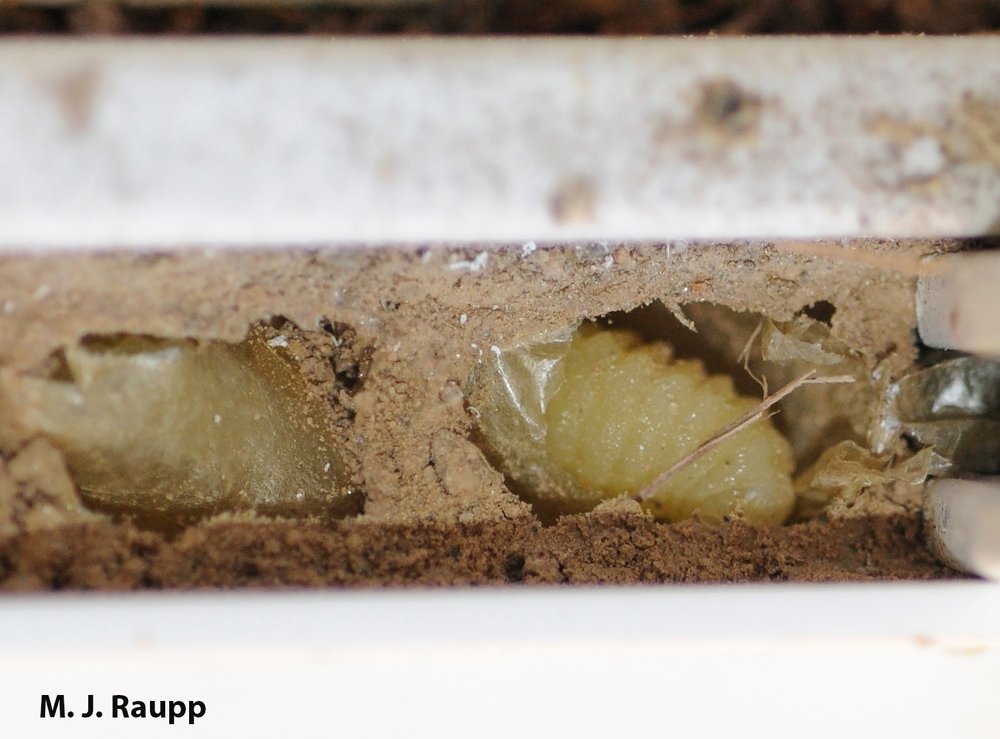
I discovered these cells containing larvae of mason wasps in a channel of my living room window.
After finding a suitable gallery, which could be the drain hole in a window frame or an unused gallery of a mason bee or carpenter bee, the female mason wasp deposits an egg within the gallery. She then exits the gallery to hunt small caterpillars, many of which are garden pests. Upon encountering a caterpillar, the female mason wasp uses a potent venom to paralyze the prey. Sometimes as many as 19 caterpillars are captured, paralyzed, and used to provision the cell where an egg awaits. Ah, but these caterpillars are not truly dead. Like Westley, the Dread Pirate Roberts of Princess Bride fame, these caterpillars are only mostly dead. Paralyzed but still living, they provide fresh meat to be consumed after the spawn of the female wasp hatches from an egg deposited in small cell within the gallery. Upon hatching, the wasp larva drops onto the hapless caterpillar to feast.
When a sufficient number of prey have been captured, the female seals the gallery with a plug of mud or sand particles, hence the name mason wasp. In a remarkable display of gender control, the female wasp is able to lay either a male or a female egg. Due to the shorter developmental time of the male offspring, male eggs are usually placed near the opening of the gallery and female eggs are placed deeper within. If you see these magnificent black and white wasps entering drain holes on your window frames, fear not, your home is not under attack. You have provided a nesting site for these black and white beauties. In return, they will pollinate your plants and help eliminate pests like the caterpillars on monardas and other garden plants.
Acknowledgements
The wonderful references “Trap nesting wasps and bees: Life histories, nests, and associates” by Karl Krombein and “The cocooning habit of the wasp, Monobia quadridens” by Phil Rau were consulted to prepare this episode.
This post appeared first on Bug of the Week

